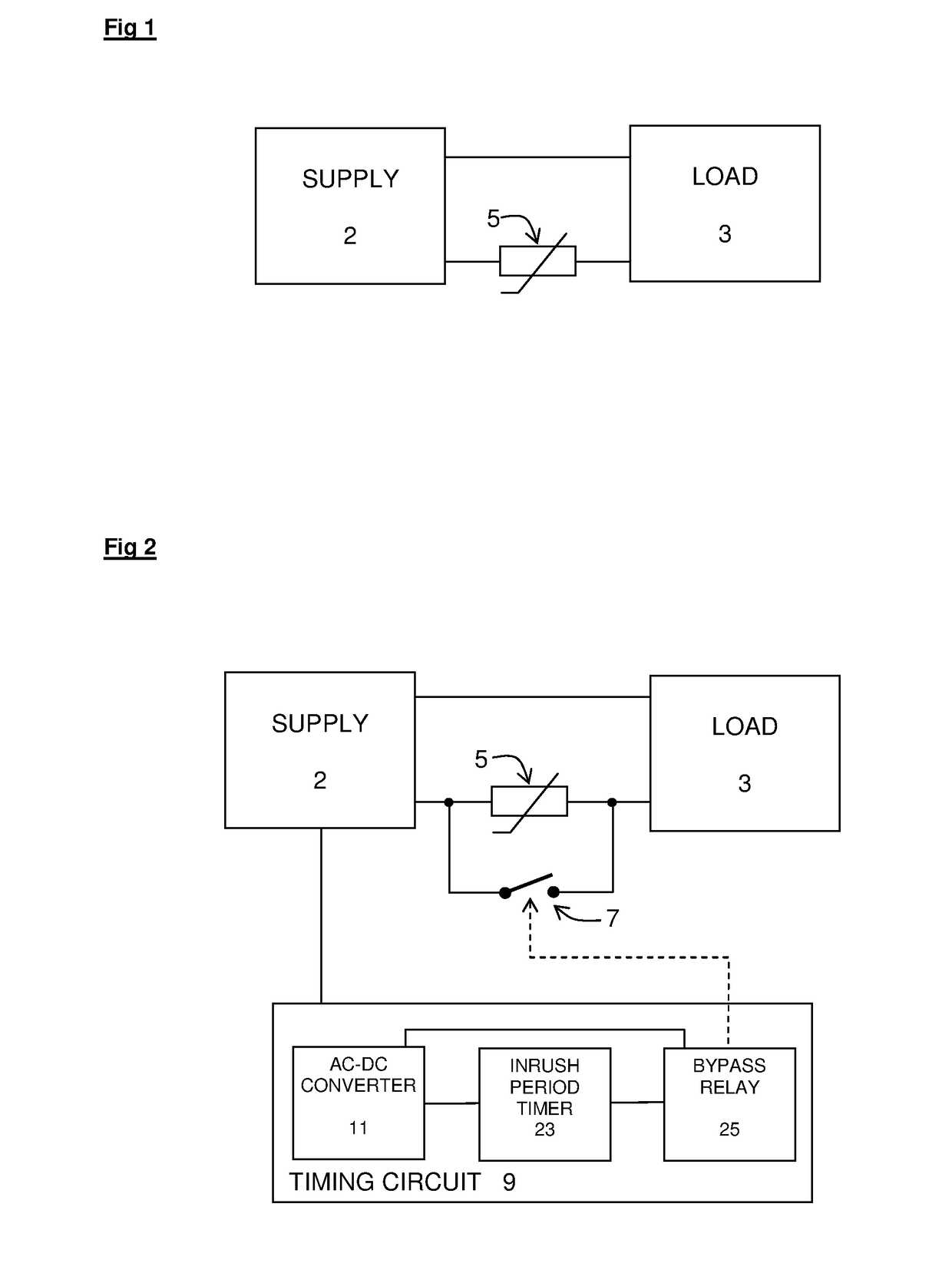Inrush Current Limiter
a technology of inrush current and limiter, which is applied in the direction of circuit arrangement, emergency protective arrangement for limiting excess voltage/current, electrical apparatus, etc., can solve the problems of inrush current tripping of protection device supporting electronic device, inconvenient tripping of mains supply, permanent damage to electronic components of electronic device, etc., to reduce the period in which the system is vulnerable to inrush current and simplify circuit construction.
- Summary
- Abstract
- Description
- Claims
- Application Information
AI Technical Summary
Benefits of technology
Problems solved by technology
Method used
Image
Examples
Embodiment Construction
[0042]Preferred embodiments of the present invention are now provided with reference to the accompanying figures.
[0043]FIG. 1 shows a basic circuit to provide inrush current protection, well understood by those skilled in the art. A supply 2 is connected to a load 3. Arranged between the supply 2 and the load 3 is an impedance 5, where the impedance 5 may be a resistor, but is preferably a Negative Temperature Coefficient (NTC) thermistor. Hereafter reference will be made to an NTC thermistor, but it is to be understood that alternative impedances may be used. The arrangement of the NTC thermistor 5 between the supply 2 and the load 3 provides a high resistance to currents in a period immediately following an initial turn on of the supply, and low resistance during steady-state operation. Following turn off of the supply 2, the NTC thermistor 5 remains in a ‘warm’, low-resistance state during a period in which it cools to a high-resistance state. Therefore a vulnerable period, a per...
PUM
 Login to View More
Login to View More Abstract
Description
Claims
Application Information
 Login to View More
Login to View More - R&D
- Intellectual Property
- Life Sciences
- Materials
- Tech Scout
- Unparalleled Data Quality
- Higher Quality Content
- 60% Fewer Hallucinations
Browse by: Latest US Patents, China's latest patents, Technical Efficacy Thesaurus, Application Domain, Technology Topic, Popular Technical Reports.
© 2025 PatSnap. All rights reserved.Legal|Privacy policy|Modern Slavery Act Transparency Statement|Sitemap|About US| Contact US: help@patsnap.com



